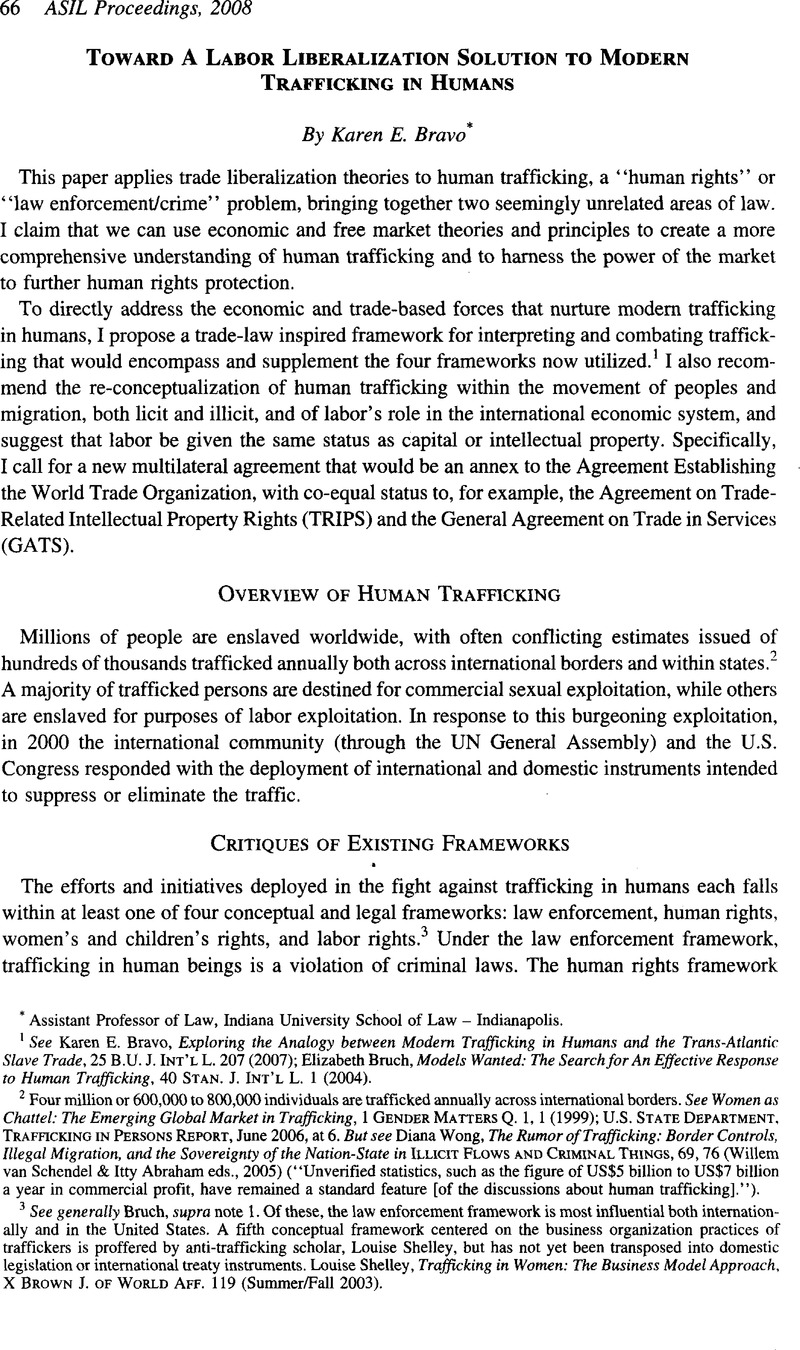Article contents
Toward A Labor Liberalization Solution to Modern Trafficking in Humans
Published online by Cambridge University Press: 28 February 2017
Abstract

- Type
- New Voices: The Role of International Legal Institutions in Norm Development
- Information
- Copyright
- Copyright © American Society of International Law 2008
References
1 See Bravo, Karen E. Exploring the Analogy between Modern Trafficking in Humans and the Trans-Atlantic Slave Trade, 25 B. U. J. Int’l L. 207 (2007)Google Scholar; Bruch, Elizabeth, Models Wanted: The Search for An Effective Response to Human Trafficking, 40 Stan. J. Int’l L. 1 (2004)Google Scholar.
2 Four million or 600,000 to 800,000 individuals are trafficked annually across international borders. See Women as Chattel: The Emerging Global Market in Trafficking, 1 Gender Matters Q. 1, 1 (1999); U.S. State Department, Trafficking in Persons Report, June 2006, at 6. But see Wong, Diana, The Rumor of Trafficking: Border Controls, Illegal Migration, and the Sovereignty of the Nation-State in Illicit Flows and Criminal Things, 69, 76 (van Schendel, Willem & Abraham, Itty eds., 2005)Google Scholar (“Unverified statistics, such as the figure of US$5 billion to US$7 billion a year in commercial profit, have remained a standard feature [of the discussions about human trafficking].”).
3 See generally Bruch, supra note 1. of these, the law enforcement framework is most influential both internationally and in the United States. A fifth conceptual framework centered on the business organization practices of traffickers is proffered by anti-trafficking scholar, Louise Shelley, but has not yet been transposed into domestic legislation or international treaty instruments. Shelley, Louise, Trafficking in Women: The Business Model Approach, X Brown J. of World Aff. 119 (Summer/Fall 2003)Google Scholar.
4 For more in-depth discussion of the frameworks and the applicable instruments, see Bruch supra note 1 ; and Bravo, supra note 1.
5 The institutional and conceptual investments currently undertaken with respect to human trafficking are all too reminiscent of the institutional and other investments in the “War on Drugs.” We are all too familiar with the successes of that particular “War.”
6 See, e.g., Srikantiah, Jayashri, Perfect Victims and Real Survivors: The Iconic Victim in Domestic Human Trafficking Law, 87 B.U. L. Rev. 157 (2007)Google Scholar.
7 Bravo, supra note , at 281-82.
8 With the significant exception of the European Union.
9 See, e.g., Shelley, supra note 3.
10 Id.
- 3
- Cited by




